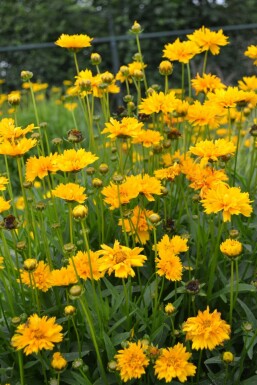
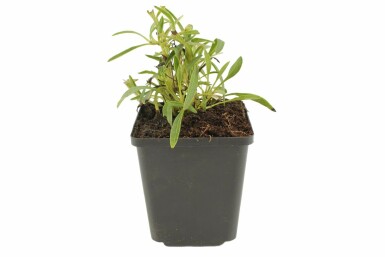
40cm


Updated on 10 September 2025
We regret to inform you that we are currently unable to ship orders to the United Kingdom. We anticipate being able to resume shipments at the beginning of 2026.
Coreopsis offers vibrant yellow blooms, perfect for summer gardens. Known for attracting bees and butterflies, it thrives in drought-tolerant borders. With its airy growth, it suits borders, pots, and wildflower gardens, ensuring a cheerful and low-maintenance display.


40cm


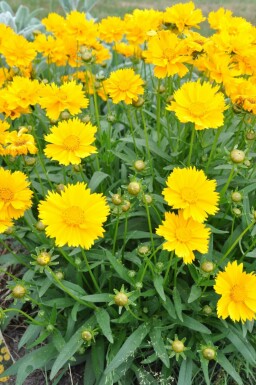

50cm


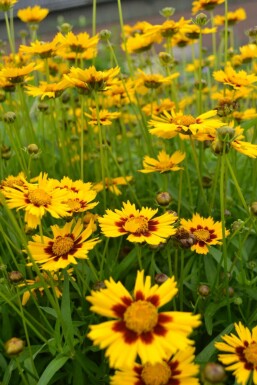
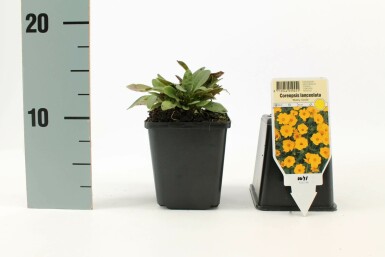
50cm




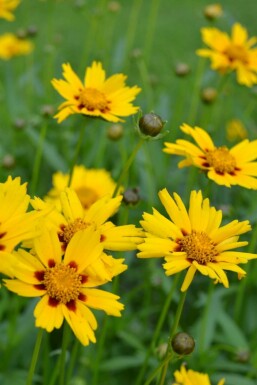
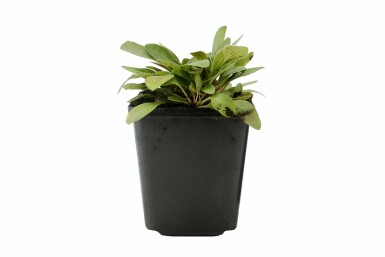
50cm



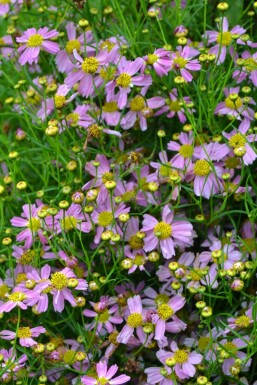
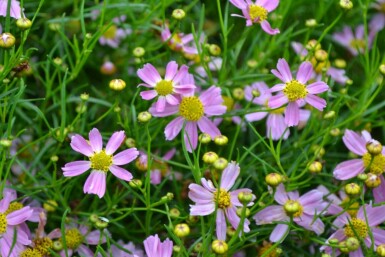
30cm



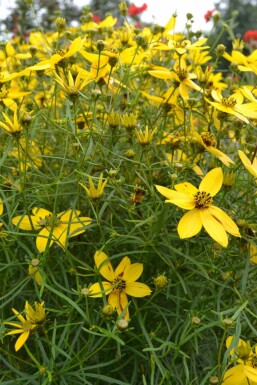
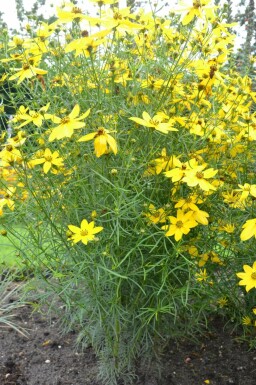
60cm


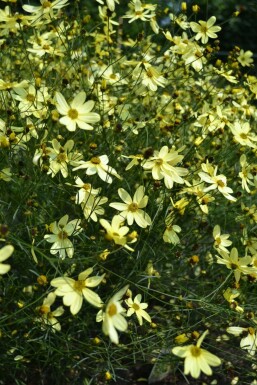
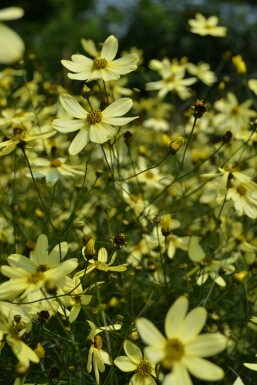


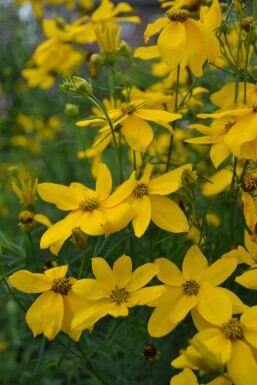
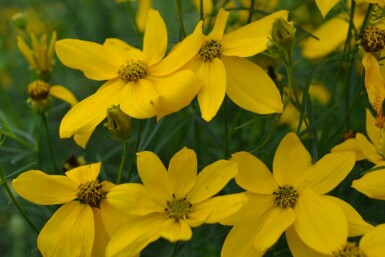



Coreopsis brings vibrant colour to any garden. With its daisy-like flowers and fine branching, this long-blooming perennial is a favourite for many gardeners. Its yellow and orange blooms add a cheerful touch, making it perfect for borders and wildflower gardens. The drought-tolerant nature of tickseed makes it ideal for low-maintenance gardens. These flowers attract bees, supporting garden biodiversity throughout summer and autumn. It's an excellent choice for a garden looking for long-lasting blooms. Discover more about this delightful plant and how it can enhance your garden's charm.
of Coreopsis (tickseed).Coreopsis is a wonderful choice for any garden looking for vibrant summer blooms. This perennial offers dazzling yellow flowers that bloom from June to October, making it perfect for brightening up garden borders. As a drought-tolerant plant, Coreopsis thrives in various conditions, including clay soil, providing airy growth that adds texture to wildflower gardens. Known for being pollinator-friendly, this plant attracts bees and butterflies, enhancing the ecological value of any outdoor space. For those seeking long and eye-catching flowering borders, Coreopsis is an ideal addition. Not only is it known for its beauty, but it also offers short-lived traits that make maintenance easier. Embrace the joy of gardening with Coreopsis, a reliable choice for both novice and experienced gardeners.
Buy Coreopsis (Tickseed) from Heijnen and enjoy months of sunny yellow blooms that attract butterflies like a magnet.
Coreopsis, commonly known as tickseed, is a vibrant addition to gardens. This daisy-like flower blooms abundantly, bringing joy and colour. Often referred to as Coreopsis daisy, golden blooms, and long-flowering perennial, it thrives in various settings such as borders, group plantings, pots, and even insect nooks. Native to North America and Mexico, Coreopsis is part of the Asteraceae family. Its attractive flowers draw in pollinators like bees, butterflies, and beetles, creating a lively garden atmosphere. The plant is not only pollinator-friendly but also tolerant of clay and drought conditions. While tickseed has short-lived traits, it remains a popular choice for a low-maintenance garden. Its etymology stems from Greek, with 'koris' meaning bug and 'opsis' signifying appearance, due to its insect-like seeds. In Victorian times, it symbolised joy and harmony. Coreopsis can be either perennial or annual, known for its long blooming period and ability to thrive in poor soils. With its beauty and resilience, this flower is perfect for anyone looking to buy Coreopsis in the UK to enhance their garden with long-flowering border perennials.
The Coreopsis is a sun-loving garden plant with a long flowering period. This perennial grows in a bushy, clump-forming manner, making it ideal for borders and group plantings. The plant features compound leaves and daisy-like flowers that are compact or open. Its fine branching adds to the ornamental appeal. Coreopsis displays a remarkable growth cycle, beginning early in spring and extending into late autumn. Initially, it produces lush foliage, followed by vibrant flowers. This progression ensures good coverage in the garden over the summer months. Flowering typically occurs from June to August, though some varieties may continue until October. Factors like climate, care, and soil preparation significantly impact blooming. Warmer conditions and proper maintenance encourage more extended periods of flowering. Flowers appear in shades of golden yellow, bright yellow, lemon yellow, and red-yellow bicoloured. The cultivar and soil conditions influence these vivid colours. Adequate sunlight also plays a crucial role in maintaining bright hues. Coreopsis is not primarily known for fragrance, but its flowers can attract pollinators such as bees and butterflies. Leaf and stem aromas are subtle, offering minor biodiversity benefits in a garden. The mature height of Coreopsis varies from 40 cm to 2 m, depending on the species and growing conditions. Its adaptability to different soils, including clay, makes it a versatile choice for many gardeners. Proper site selection and care contribute to achieving its full height potential.
Coreopsis, known for its cheerful yellow flowers, has narrow, lanceolate leaves with a fresh green colour. The finely divided leaves are sometimes incised, adding texture to gardens. In winter, coreopsis generally retains its foliage, depending on the species and local climate. Hardy in USDA zones 4 to 6, coreopsis can withstand temperatures as low as -34°C. Factors like prolonged frost, wind exposure, and soil conditions affect its resilience. Choose the right species for local conditions to ensure winter survival. Coreopsis is also drought-tolerant, thanks to its deep root system and leaf structure, which conserve moisture. It thrives even in hot and dry periods, blooming from June to October, providing a long flowering period. Despite its resilience, adequate watering during extreme droughts enhances its performance. Safety is a key feature of coreopsis, as it's non-toxic to children and pets, making it ideal for family gardens. Not only is coreopsis safe, but it also supports biodiversity. The plant's long flowering period attracts pollinators and provides seeds for birds, enhancing garden ecosystems. Deadheading can encourage more blooms and prolong flowering, benefiting both aesthetics and wildlife. Coreopsis is an excellent choice for increasing garden biodiversity and creating an insect-friendly environment. Whether for a home garden or a public space, coreopsis adds vibrant colours and supports ecological balance.
Coreopsis, with its vibrant daisy-like flowers, is a wonderful addition to any garden. As a summer-blooming perennial, it brings a splash of colour to borders and group plantings. Here are some inspiring ways to incorporate Coreopsis in a cottage or prairie-style garden:
For anyone looking to enhance their garden with long-lasting blooms and vibrant colours, consider adding Coreopsis to the mix. Whether used in borders, as part of group plantings, or in pots, this drought-tolerant perennial is a versatile choice. Enhance any garden with the daisy-like beauty of tickseed. Looking to buy tickseed? It's a great investment for a garden full of summer joy and biodiversity.
Coreopsis is a vibrant choice for any garden. It pairs well with other plants to create stunning displays. Echinacea adds height and different shades of pink or purple, which complement the yellow of Coreopsis. Gaillardia's bright red and orange flowers make a bold contrast, while Rudbeckia, with its striking dark centres, provides a rich backdrop. Achillea, with its delicate clusters, softens the look and attracts beneficial insects. Another great companion is Salvia, which brings deep blues and purples, adding variety and attracting pollinators. These combinations thrive because they all enjoy sunny, dry conditions, making a drought-tolerant border that blooms throughout summer. Coreopsis is a sun-lover that blooms for a long time and adds cheerful colour to perennials. Its long-lasting blooms ensure continuous colour, creating an inviting haven for bees and butterflies. By selecting plants like Echinacea and Rudbeckia, which also attract pollinators, the garden not only looks beautiful but supports local wildlife. This combination of colourful flowers ensures a vibrant and dynamic garden, with plenty of interest and life throughout the summer months.
Coreopsis (tickseed) thrives best in sunny spots with at least 6 hours of sunlight each day. It can tolerate light shade, but more sun ensures abundant golden blooms. Protecting the plant from strong winds is crucial, as this can damage the flowers and stems. Positioning near windbreaks or using garden structures can help reduce wind exposure. For soil requirements, Coreopsis prefers dry to moderately fertile, well-drained ground. A well-drained soil is key to avoid waterlogging and promote healthy growth. Regular fertilisation enhances growth, and drought-tolerant qualities mean once established, frequent watering becomes unnecessary. The ideal soil moisture for this long-flowering perennial is moderate. Exposure to too much wind or intense sun can dry out the soil, so maintaining the right balance is important. The pH level should be neutral to slightly acidic, which helps nutrient uptake and overall plant health. Tickseed's resilience makes it a popular choice for borders, requiring minimal intervention once settled. Remember to check local conditions to ensure success before you buy Coreopsis in the UK.
Plant Coreopsis in spring or early autumn. These times offer optimal conditions for growth when the soil retains warmth and moisture. Coreopsis provided in pots can be planted all year, except during frost. For those with root balls, spring and autumn are ideal.
The planting distance for Coreopsis depends on plant type, size, and growth rate. Usually, information about the number of plants per metre is found on the product page. It's essential to allow enough space for growth.
Prepare soil well for Coreopsis. Use well-drained soil and enrich it with compost. Heijnen anplantgrond is recommended for best results. Ensure a sunny spot, as Coreopsis prefers at least 6 hours of sunlight daily. Avoid wet soil to prevent root issues.
Planting instructions for Coreopsis include digging a hole twice as wide as the root ball. Place the plant at the same depth it was in its pot. Water thoroughly after planting and regularly till established. Compost application encourages flowering. Tickseed benefits from balanced fertiliser in the growing season. Coreopsis is drought-tolerant, reducing excessive watering needs.
Coreopsis is a beautiful addition to any garden, known for its golden blooms that flower from June to October. This long-flowering perennial is admired for its low-maintenance nature and ability to attract bees and butterflies. Here are some essential care tips for keeping your Coreopsis thriving year after year.
By following these care tips, gardeners can enjoy the vibrant presence of Coreopsis in borders, group plantings, and even pots. With the right care, this tickseed will return each year, adding bright cheer to your garden. Buy tickseed to enhance your outdoor space today.
Coreopsis is a standout plant in any garden. The bright golden yellow flowers resemble cheerful daisies, adding a splash of colour throughout the summer months. These blooms may also feature red or yellow tints, adding to their visual appeal. Not only does Coreopsis offer vibrant flowers, but it also provides fresh green leaves that enhance its decorative value. The plant’s airy growth habit makes it perfect for adding a light touch to borders. Tickseed is well-known for attracting bees and butterflies, creating a lively environment in the garden. It serves as both a food source and a sanctuary for these vital pollinators. In addition, its drought-tolerant nature makes it ideal for gardens with poor soil, thriving even when water is scarce. Coreopsis blooms sunny yellow and attracts bees as a bee plant. The plant's bushy and clump-forming growth style contributes to its robustness and longevity. As a long-blooming perennial, Coreopsis provides lasting beauty and ecological benefits, making it a valuable addition to any landscape. Remember, for a touch of yellow elegance and wildlife support, this summer bee plant is just what the garden needs.
Coreopsis, also known as tickseed, is a popular choice for UK gardens. These daisy-like flowers are known for their vibrant hues and ability to thrive in various conditions. With blooms from June to October, they are drought-tolerant perennials that add a splash of colour to any garden. Coreopsis species vary, offering options suitable for different landscape needs. Here are some popular varieties:
Coreopsis is a popular choice for gardens due to its vibrant appearance and easy maintenance. This plant offers several benefits for both formal and wild garden settings.
Advantages:
Disadvantages:
Proper soil preparation and choosing the right location can reduce issues with pests and diseases. Regular care and timely fertilisation will ensure the best growth and flowering
We would like to provide some tips on how to plant and care for a Coreopsis. By following these tips, you can be sure to enjoy your Coreopsis for a long time.
Coreopsis thrives best in sunny spots with at least 6 hours of sun daily. It prefers dry, sandy, or moderately fertile soil that is well-drained. This plant benefits greatly from such conditions, resulting in better growth, richer blooms, and healthier foliage. The right location also enhances the plant's natural drought resistance, ensuring stunning displays even in challenging climates. Coreopsis does well on various soil types, provided they are not waterlogged. While it can tolerate light shade, full sun is ideal for optimal blooming. Different species within the genus may have slight variations in moisture preference, but overall, well-draining soil is key. Coreopsis is versatile in garden use, suitable for borders, group planting, pots, and as part of an insect nook. It's also excellent for low-maintenance gardens. Choosing the right spot is essential for its vibrant growth and beautiful flowers.
Proper soil preparation is key before planting Coreopsis. The soil should be well-drained and lightly fertile. Mixing organic materials like compost into the existing earth enhances nutrient levels and improves water absorption, vital for plant growth. Preparing the soil correctly not only benefits the plants but also ensures a healthy environment for the roots to establish. Coreopsis can be planted year-round if pot-grown, except during frost periods, while root-balled plants do best in spring or autumn. After planting, water the Coreopsis well until the roots are established. The size of the plant determines how many you can fit per square metre, so plan accordingly. Choosing the right spot with at least six hours of sun ensures that Coreopsis blooms beautifully. Select a sunny position and avoid excessive moisture to keep the plants thriving.
Fertilising Coreopsis is vital for its growth and health. It supports vibrant blooms and strong vitality. Use organic or organic-mineral fertilisers from Heijnen for the best results. They promote healthy growth and abundant blooms. Fertilise tickseed twice a year: in spring and again during summer for poor soil. This ensures the plant gets necessary nutrients without over-fertilising, which can harm flower production. Apply a light amount of fertiliser, adjusting based on plant size. The nutrients are absorbed by the soil with water, so in dry periods, watering helps the fertiliser work effectively. Regular care ensures Coreopsis thrives, enhancing your garden with its beautiful golden blooms.
Coreopsis is a vibrant addition to any garden, and pruning is essential for keeping it healthy. Pruning helps this plant by promoting new growth and maintaining a tidy appearance. It's best to prune Coreopsis after flowering, which usually occurs in late summer. This keeps the plant in shape and encourages more blooms. Removing faded flowers can also stimulate continuous blooming. Use sharp secateurs for the best results, ensuring clean cuts without damaging the plant. Choosing the right time and tools for pruning is crucial. For Coreopsis, either October or March is ideal, depending on your climate. Regularly dividing the plant can also boost its vitality. Pruning not only enhances the plant's beauty but also strengthens its overall health, making the garden more appealing. Remember, a well-pruned Coreopsis can truly transform any garden space.
Coreopsis thrives in moderately dry to slightly moist soil. New plants need regular watering to help them root well. Once established, they only require water during prolonged dry spells. It's better to water deeply and less frequently than to give small amounts daily. The best time to water is early morning or late afternoon to reduce evaporation. Check the soil before watering to ensure it's necessary. It's important that excess water can drain away, whether in the ground or pots. Drip irrigation is effective once plants are rooted, but newly planted ones need direct watering. Coreopsis, especially perennial types, is drought-tolerant and can withstand dry conditions well.
Coreopsis is a vibrant plant with cheerful yellow flowers that often have red or yellow tints. It has a long flowering period, bringing joy and harmony to any garden. Known for its airy growth habit, Coreopsis is also drought-tolerant and attracts bees and butterflies, making it an ecological asset. Its seeds resemble insects, which is reflected in its Greek etymology. Safe for children and pets, Coreopsis, or tickseed, is a wonderful choice for borders and flowerbeds.
Coreopsis benefits from dividing every few years to maintain its health and promote growth. This process helps rejuvenate the plant and allows removal of older parts. The division of coreopsis should ideally be done in early spring or autumn, with a preference for autumn. To divide, carefully dig up the plant, remove any old parts, and replant the younger sections. This not only keeps the plant healthy but also encourages more blooms. Dividing coreopsis also prevents overcrowding and ensures each clump has enough space to thrive. Use a sharp spade or garden fork for clean cuts and effective separation. Regular division helps sustain vibrant and long-lasting tickseed blooms in the garden.
Tickseed is a delightful perennial with daisy-like flowers that bloom from summer to autumn. Its cheerful yellow, sometimes red-tinted blooms attract bees and butterflies. This drought-tolerant plant boasts airy growth, making it perfect for borders. Its long flowering season and fresh green leaves add beauty to any garden. Buy Coreopsis (Tickseed) from Heijnen and enjoy months of vibrant colour.
